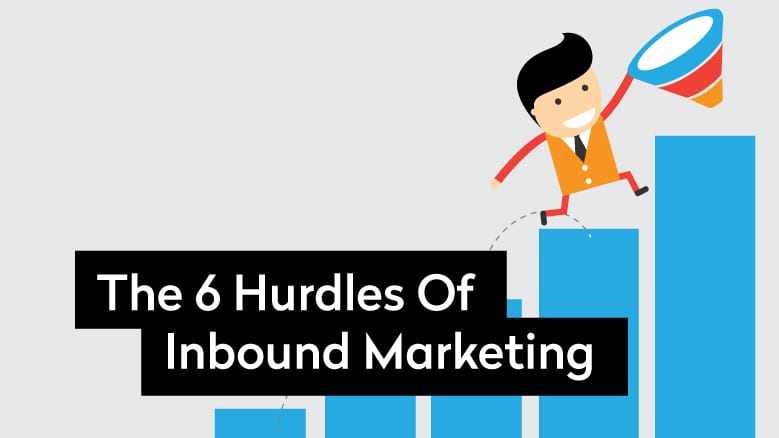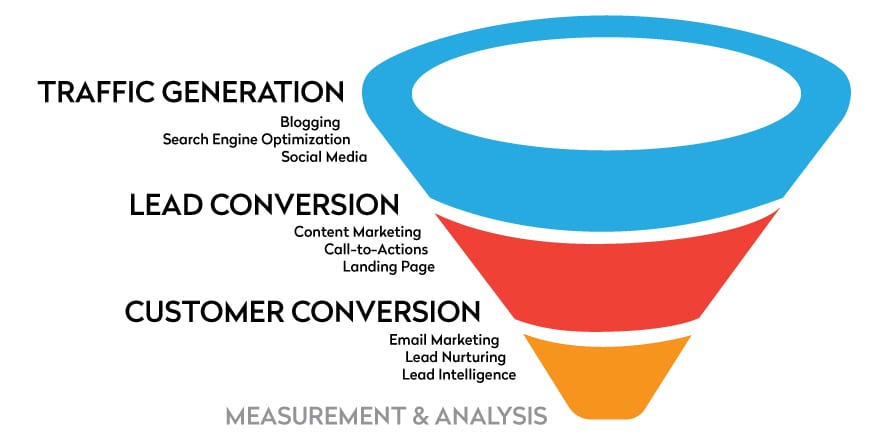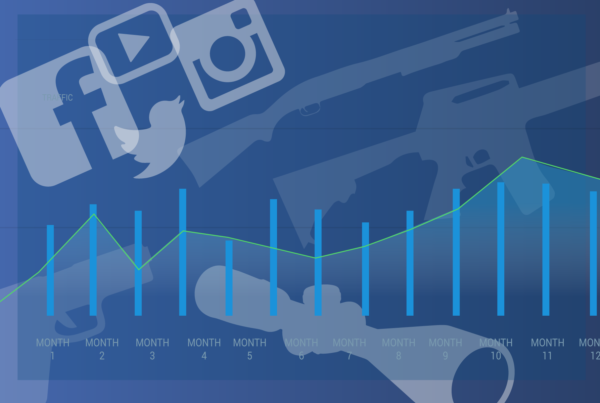
Thinking about pulling the trigger on inbound marketing? Have you taken the time to consider what it will take to make your investment pay off?
There is no doubt that there is a lot of buzz surrounding inbound marketing with over 78% of CMO’s thinking custom content is the future of marketing.
But before you and your team dive in—there are 6 hurdles you need to consider before committing to inbound that could make or break your investment.
1. Education
It takes time to learn how to do inbound marketing correctly. You must understand the inbound methodology of Attract, Convert, Close and Delight.
There are 8 activities that are attached to each one of these components: Blogging, SEO, Social Media, Content Offers, CTAs, Landing Pages, Email and Lead Nurturing (Work Flows).
Then there’s the sales funnel you must perfect once you get the prospect on the line. All of these things need to be understood to successfully manage an inbound marketing campaign.
![]()
To get trained on inbound marketing, checkout HubSpot Academy.
2. Time
Inbound marketing takes 6-12 months to start seeing viable results. This could be faster depending on your industry. Industries who have yet to engage in inbound marketing stand to profit the most (construction, engineering, certain sectors of technology, healthcare, medical device, transportation and manufacturing just to name a few). You will need to blog at least 1-2x per week, create content offers, curate content, interact with your followers, comment on posts, read and research as well as manage all of the activities from hurdle 1. You will need at least 10-15 hours minimum to conduct inbound effectively. If you don’t have that kind of time, an inbound marketing agency can help you split the workload.
3. Consistency
Without consistency in your blogging your results will fall short. Google demands fresh and relevant content. By updating and optimizing your blog weekly—with relevant and valuable content—your website’s search engine rankings will climb and you’ll begin to generate more traffic—which equals more leads—that lead to customers.
 4. Analyzing
4. Analyzing
After you get your inbound engine humming, you’ll need to have an in-depth analytical tool to understand how your efforts are performing. We recommend a time-saving tool like HubSpot to quickly understand your analytics.
5. Getting traction
There will be months were you will feel like you’re going backwards. Then all of sudden, a post will go viral and traffic spikes 500% and the leads poor in. I think in all of the campaigns I’ve seen, there are two to three months when you begin to question your commitment. The best way to get traction is to be consistent and keep going even when it gets tough. Write your blog posts with personality, pick topics that solve your customer’s problems and spend time promoting your content effectively. Eventually things will pick up, so don’t fret. Planning budget for PPC is a good idea when the going gets tough.
6. Price
Obviously price is always a hurdle. HubSpot pricing can be out of range for most startups and small businesses. However, by making the investment and putting some skin in the game—the time you save will be more than worth it. HubSpot’s all-in one-platform brings all the tools you need into one portal so you can effectively manage all your inbound activities at once.
When you factor in your marketing budget on alternative outbound methods like trade show, email blasts, buying lists, cold-calling, printed ads, radio or banner ads—inbound still provides the lowest cost-per-lead and delivers 54% more leads than traditional outbound marketing. Inbound also provides the only systematic way to forecast sales, measure your brand and grow your business.
Content marketing facts
- $135 billion will be spent on new digital marketing collateral (content) in 2014
- 78% of CMO’s think custom content is the future of marketing
- Internet advertising will make up 25% of the entire ad spend by 2015
- Social media marketing budgets will double over the next 5 years
- Email with social sharing buttons increase click-through rates by 158%
- Nearly 50% of companies have content marketing strategies
- 33% of traffic from Google’s organic search engine results go to the first item listed
- 67% of B2B content marketers consider event marketing essential
- 73% of reporters think press releases should contain images
- 72% of “Pay per Click” marketers plan to increase their budget in 2014
- 52% of all marketers have found a customer via Facebook in 2013
- B2B companies that blog generate 67% more leads
- 43% of all marketers found a customer via LinkedIn
- 55% of marketers worldwide increased digital marketing budgets in 2013
- Customer testimonials have the highest effectiveness for content marketers at 89%
- Videos on landing pages increase conversions by 86%
- 65% of your audience are visual learners
- Marketers will use dynamic content to deliver highly personalized experiences to the right audiences at the right time
- Inbound marketing delivers 54% more leads than traditional outbound marketing
- Visual data is processed 60,000 times faster by the brain than text.
SOURCE: Jeff Bullas
 Inbound marketing is not for everyone, but the up-side far outweighs the down-side. We’ve been doing inbound with HubSpot since January of 2014 and our results have been amazing. I’ve been very happy with our growth—this is coming from someone who works in the ultra-competitive marketing industry working in the Indianapolis and Denver markets.
Inbound marketing is not for everyone, but the up-side far outweighs the down-side. We’ve been doing inbound with HubSpot since January of 2014 and our results have been amazing. I’ve been very happy with our growth—this is coming from someone who works in the ultra-competitive marketing industry working in the Indianapolis and Denver markets.
Interested in learning if Inbound Marketing is right for your business?





